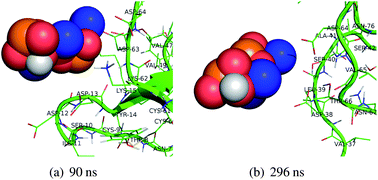Exploring the mineralization of hydrophobins at a liquid interface†
Abstract
Hydrophobins, a class of highly surface active amphiphilic

* Corresponding authors
a
Lehrstuhl für Makromolekulare Materialien und Oberflächen, DWI an der RWTH Aachen e.V, RWTH Aachen University, Forckenbeckstr. 50, 52056 Aachen, Germany
E-mail:
boeker@dwi.rwth-aachen.de
Fax: +49 2418023301
Tel: +49 2418023304
b Konrad-Müller Str. 17, 52249 Eschweiler, Germany
c VTT, Technical Research Centre of Finland Biotechnology, Tietotie 2, Finland
d Department of Biotechnology, DWI an der RWTH Aachen e.V, RWTH Aachen University, Worringer Weg 1, 52074 Aachen, Germany
e Fine Chemicals Research, BASF SE, 67056 Ludwigshafen, Germany
f
Center of Smart Interfaces, TU Darmstadt, Petersenstr. 17, 64287 Darmstadt, Germany
E-mail:
rodriguez@csi.tu-darmstadt.de
Fax: +49 61511672090
Tel: +49 61511675244
Hydrophobins, a class of highly surface active amphiphilic

 Please wait while we load your content...
Something went wrong. Try again?
Please wait while we load your content...
Something went wrong. Try again?
A. Schulz, M. Fioroni, M. B. Linder, A. Nessel, M. Bocola, T. Subkowski, U. Schwaneberg, A. Böker and F. Rodríguez-Ropero, Soft Matter, 2012, 8, 11343 DOI: 10.1039/C2SM26428E
To request permission to reproduce material from this article, please go to the Copyright Clearance Center request page.
If you are an author contributing to an RSC publication, you do not need to request permission provided correct acknowledgement is given.
If you are the author of this article, you do not need to request permission to reproduce figures and diagrams provided correct acknowledgement is given. If you want to reproduce the whole article in a third-party publication (excluding your thesis/dissertation for which permission is not required) please go to the Copyright Clearance Center request page.
Read more about how to correctly acknowledge RSC content.
 Fetching data from CrossRef.
Fetching data from CrossRef.
This may take some time to load.
Loading related content
